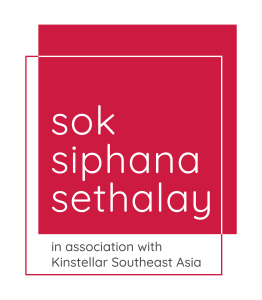ZICO Law Vietnam Talks Tech Transfer
In the article LESI 2017’s Augmented Reality, Asia IP discusses the increase of the number of artificial intelligence-related patent applications. Countries such as China, Japan and the US, with the most AI related patent applications, have lifted such development to a national strategic level.
Phuc Nguyen, partner at ZICO Law Vietnam, discussed the key issues around technology transfer arrangements and methods for determining the market price of products in transactions between parties having an associated relationship.
Extract of Asia IP’s article, LESI 2017’s Augmented Reality (article):
Key Issues around Technology Transfer Arrangements
In Vietnam, technology transfer contracts are not subject to compulsory registration but, if they choose, contracting parties have the option of registering their contracts, says Phuc Nguyen, a partner at ZICO Law in Ho Chi Minh City. “Key issues around technology transfer pricing arrangements in Vietnam include the price and method of payment for technology transfers, and transfer pricing issues including issues related to the determination of market prices and the advance pricing agreement (APA).”
Matters revolving around the price and method of payment can be solved by both contracting parties, and payment can be made by one or several of the following methods, including one-off or instalment payment in money/goods; transfer of the value of the technology as a capital contribution to an investment project or to capital of an enterprise as stipulated by law; and other payment methods as agreed by the parties.
“Generally, a taxpayer who fails to purchase/sell, record and declare the value of goods/services in accordance with the common market value of the transaction is subject to a tax amount fixed by the relevant tax authority,” says Nguyen.
In the event a technology transfer contract is made between parties having an associated relationship, the pricing under such contract would be subject to the tax regulations applicable to transactions between “parties having an associated relationship,” Nguyen says. ‘Parties having an associated relationship’ is currently defined as parties having a relationship under one of the following circumstances: a) One party is either directly/indirectly involved in the management, control, capital contribution/investment of any form in the other party; b) The parties are either directly/indirectly subject to the management, control, capital contribution or investment of any form by another party; or c) The parties together participate directly/indirectly in the management, control, capital contribution or investment of any form in another party.
Market price and APAs are among the key issues around technology transfer pricing arrangements between parties with associated relationships.
The methods for determining the market price of products in transactions between parties having an associated relationship (also called associated transactions) include:
1) The comparable independent transaction price method. This method uses the unit price of a product in an independent transaction as the basis for determining the unit price in an associated transaction when these transactions have equivalent transaction conditions;
2) The resale price method. This method uses the resale price (or selling price) at which a product is sold by an enterprise to an independent party as the basis for determining the price at which a product is purchased from an associated party;
3) The cost-plus method. This method uses the cost of a product purchased by an enterprise from an independent party as the basis for determining the selling price at which such product is sold to an associated party;
4) The comparable profit method. This method uses the profitability ratio of a product in independent transactions selected for comparison as the basis for determining the profitability ratio of a product in an associated transaction when these transactions have equivalent transaction conditions; and
5) The profit split method. This method uses the profit earned from a combined associated transaction conducted by several associated enterprises as the basis for determining the appropriate profit for each associated enterprise in accordance with the way that independent parties share profits in equivalent independent transactions.
“Notably, under a draft law on technology transfer, technology transfer prices require auditing in case the transactions are between parties having a parent company-subsidiary model relationship or in cases where the transactions are between parties having an associated relationship,” says Nguyen.
In the event a technology transfer transaction involves parties having an associated relationship, the taxpayer may negotiate and enter into APA with the relevant tax authority.
Matters in which the taxpayer and the relevant tax authority may agree upon in an APA include the bases of tax calculation, the method of determining taxable price or taxable price under market price. The APA shall be mandatorily implemented against the tax authority and the taxpayer once the taxpayer has fully complied with the provisions and bindings that have been set out in the APA. An APA is effective for a maximum of five years and may be extended for an additional five years.
“An agreement on the price of technology transfer should be based on the market price. This is especially so in cases where the transaction is between parties having an associated relationship,” Nguyen says. “The Vietnamese government is becoming more stringent about technology transfer transactions between parties with associated relationships. A new decree on tax management with respect to enterprises having associated transactions will come into effect in May 2017, and a draft law on technology transfer (as amended) is currently being circulated to solicit public opinion.”



